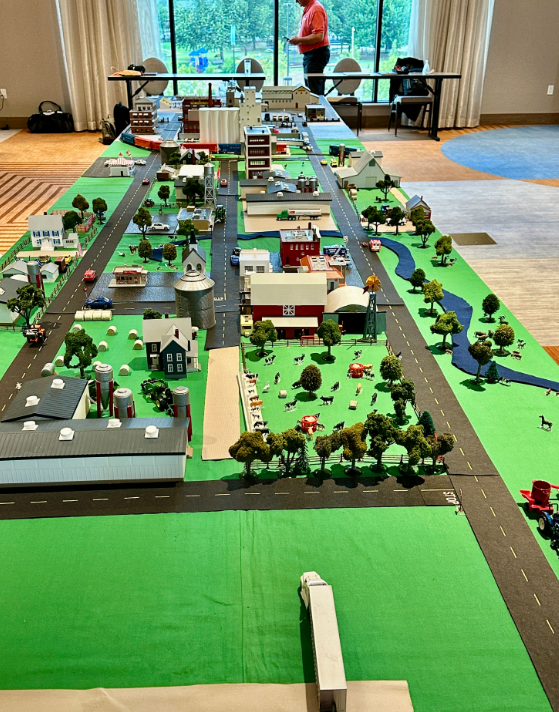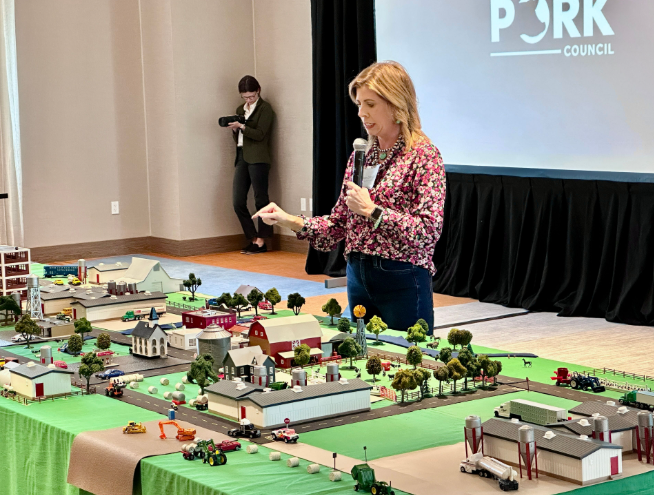
Senior Farm and Ranch Broadcaster Ron Hays spoke with Dr. Patrick Webb of the National Pork Board, who discussed the importance of preparedness for foreign animal disease outbreaks, especially in the show pig sector. “When we think of the foreign animal diseases—African swine fever, classical swine fever, foot and mouth disease—there are plans that have been developed. And if you don’t test your plans, you’re going to find out in an emergency that they may or may not work like you thought.” He emphasized that show pig breeders, exhibitors, and event organizers “need specific plans as well,” because their operations differ from the commercial pig industry.

Webb explained the scale and mobility of the show pig population: “If you were to put them under one umbrella, that’s as many pigs that would be in one of the top 10 companies.” This level of movement and activity “drives home the importance of making sure that we’ve got good plans, good biosecurity, and a good idea of what we would do in an unfortunate case of African swine fever in Oklahoma.”
Starting those conversations requires bringing the right people together. “Getting people around a table like the table that we have here today is a really good way to get the conversation started,” Webb said. He pointed out that having state veterinarians and agency representatives involved is key, because “these outbreaks… might have a prolonged period of time by which we may have to deal with it.” His goal is to “get a framework from what can work and what may not work.”
The tabletop exercises create an impactful simulation. “When you see the table and you’re hearing the conversation, it’s about as close as you can get to an actual outbreak.” Webb noted that the experience shifts perspectives: “It really drives people to start thinking about, well, not just my farm, but this whole town could be affected—the feed mill, the packing plant.” The emotional impact can be significant as participants realize the broader consequences.
From leading these exercises nationwide, Webb has observed recurring themes. “Every producer that came to the tabletops would come up and tell us more producers need to see this.” Many attendees leave with a stronger desire to improve preparedness—thinking about “What does my traceability look like? What’s the biosecurity on my farm look like? How do I communicate with the state vet if there’s a problem?” He added, “Our state vets enjoy it too, because it provides that opportunity to have those conversations now, instead of when there’s a problem, when the pressure is on.”

African swine fever is the primary focus of the current exercise. “We did this about two years ago, part one, and this is part two… today we’ll be playing with African swine fever.” Webb noted the disease’s presence in Haiti and the Dominican Republic, adding, “It’s in this hemisphere.” While the U.S. already has control measures from previous classical swine fever preparedness, he stressed the ongoing need to “make sure our biosecurity is tight and ensure it’s not coming in.”
Finally, Webb addressed another emerging concern: the new world screwworm. “These particular flies don’t care what kind of animal the wound is on… USDA is more concerned about the introduction through people or animals carrying the larva with them.” Preparedness again hinges on early detection and coordination: “Early detection comes from our producers—boots on the ground—reporting suspicious things to the state animal health official.” He concluded that having these conversations now is essential: “Hopefully we’ll keep it out, but let’s have those conversations now.”

















